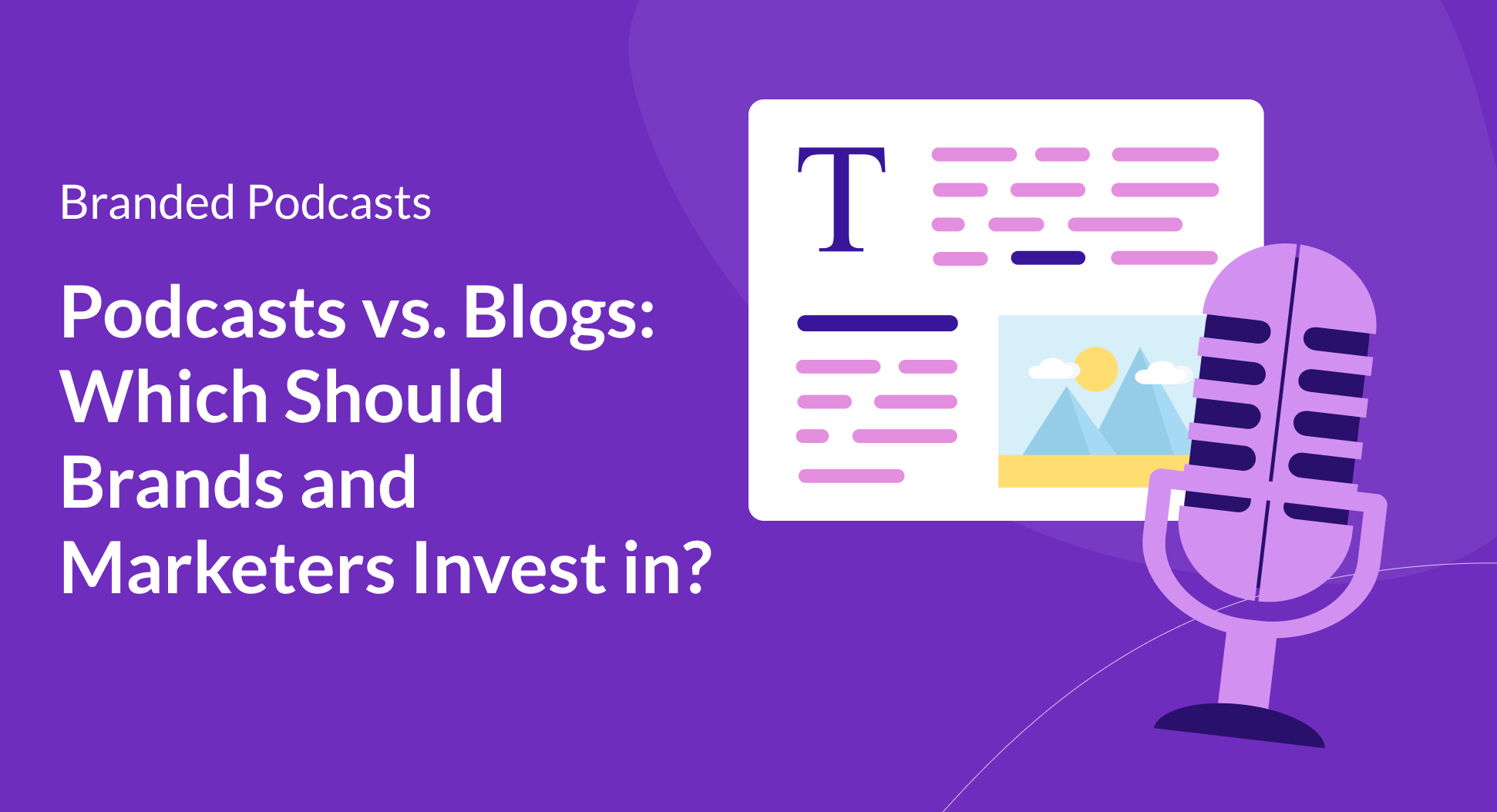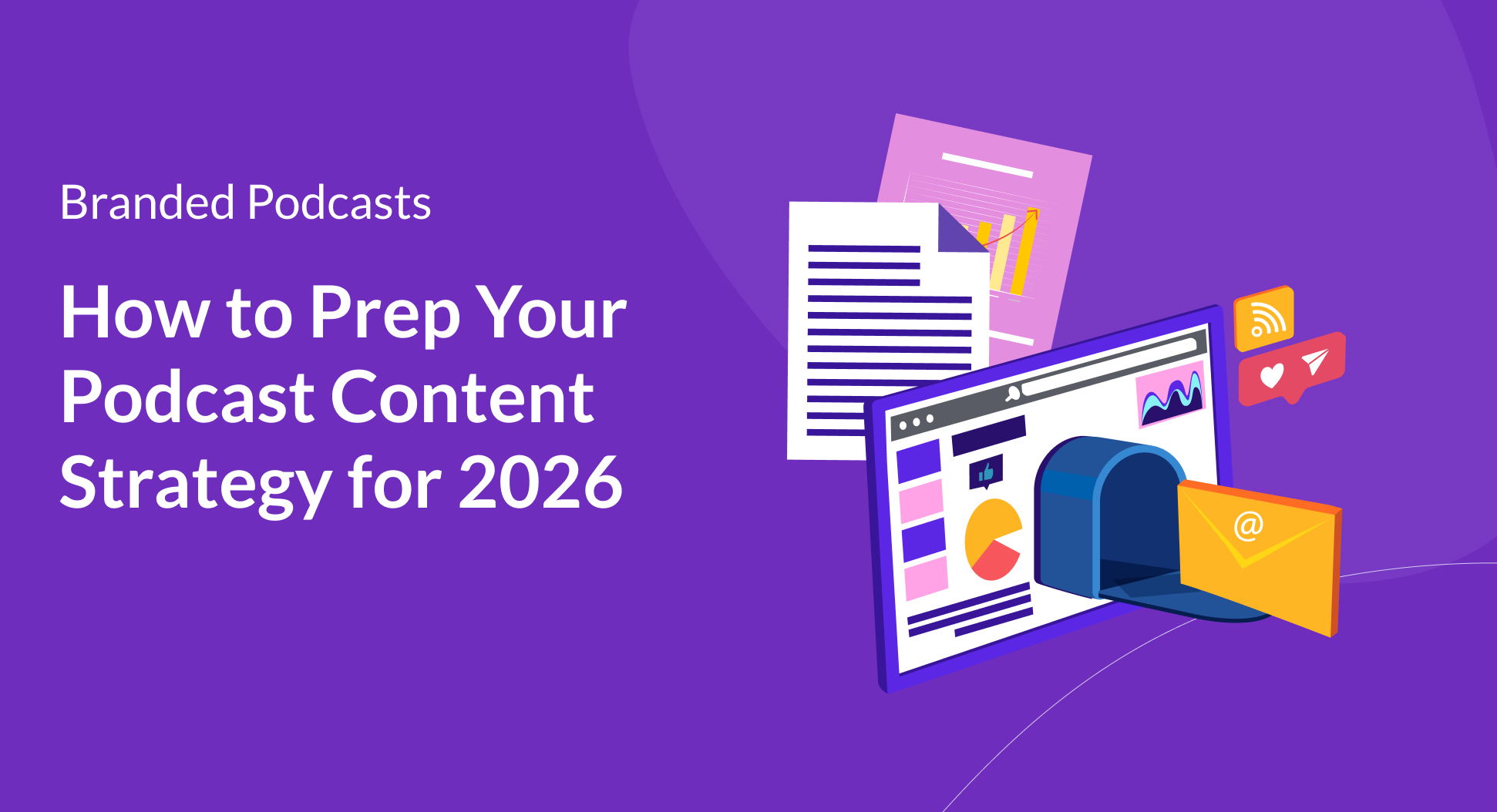Contents
As marketers, it feels like we’re constantly being bombarded both externally and internally within the organization about:
- The different platforms we need to be active on
- The type of content we need to create
- Understanding the business impact of each channel we execute on
To put it simply, marketing teams, especially content teams, are stretched thin these days, trying to check the box on all the platforms, channels, and formats.
This usually results in asking the question: How do we decide where to invest?
And it’s an important question to ask. Throughout this article, we’re going to answer one prong of that question for you:
Should your brand focus on launching a podcast, building a blog, or both (without burning out)?
We’ll be breaking down the differences, use cases, pros, cons, and how these formats can work together rather than compete.
So let’s get into it:
The role of blogs in brand strategy
For years, blogs have been a must for brands.
And as marketers, I don’t need to spend paragraphs explaining the benefits to you, because let’s be honest, we all know.
But still, I can’t resist a quick recap:
- SEO performance & organic traffic: The most obvious, SEO performance and traffic building. Even in the age of AI, blogs help boost organic traffic and discovery within both search engines and LLMs.
- Evergreen educational content: Depending on the content, blogs are evergreen and can continue to build audience and improve ranking the longer they’ve been around.
- Shareability via newsletters & social: Blogs are great assets to share through other channels like newsletters, social media, paid advertising, etc.
- Credibility & trust building: Blogs can (and should) be used at all stages of the funnel, but they’re especially great at building credibility and trust.
And when are blogs most effective, you ask? They work best to:
- Drive discovery, awareness, and brand reach
- Build resource or thought leadership hubs for the brand
- Support longer sales cycles where trust-building and nurturing are key
- Explain complex topics, products, or services that require more in-depth explanations
Brand example: HubSpot
The royalty of blog writing and the inventors of inbound marketing, HubSpot, is an amazing example of how blogs can grow a brand, becoming a household name within marketing, sales, customer success, and tech.
The rise of branded podcasts
Even just five years ago, the thought of using podcasts as a brand marketing tool was new. Only a few risk-takers were jumping on the bandwagon, think McAfee’s Hackable? or Shopify’s TGIM.
But flash forward, it’s now common practice to have a branded podcast, turning audio into an essential media asset.
The key strengths of branded podcasts include:
- Emotional connection through voice and story: Podcasts are inherently a storytelling medium. Now add the fact that you’re bringing a human element to your organization, branded podcasts help to build an emotional connection between you and your audience.
- Passive consumption: Unlike blogs or really any other marketing medium, podcasts allow for passive listening during times that your brand, otherwise, would not be able to get in front of audiences, such as commuting, doing housework, or during other multitasking activities.
- Longer attention spans: Many branded podcasts are 20-40 minutes long on average, which is an incredible amount of time to hold your audience's attention with branded content.
- Thought leadership building: Podcasts are conversational in nature. By showcasing your brand’s industry expertise and know-how through valuable conversations, you build stronger thought leadership and credibility.
And when are branded podcasts most effective, you ask? They work best:
- For building community, trust, and long-term engagement
- When your brand has a clear POV or access to great guests
- For industries where storytelling, relationships, or brand identity matter (which, really, is every industry)

Brand example: Expedia Group
Expedia Group’s Powering Travel podcast dives into the future of tourism and partnerships, providing insight in a human-centered way that would be difficult for strictly blogs to match.
Branded podcasts vs. blogs: A comparison breakdown
Choosing between podcasts and blogs: Questions to ask your team
There’s, of course, space for both blogs and podcasts in your content strategy (more on this below).
But if you are debating whether to invest time, budget, and other resources in blogs or podcasts, here are some helpful questions to ask yourself and your team:
- What’s our primary goal? Is it traffic, trust, engagement, thought leadership, or education?
- Who is our audience and how do they prefer to consume content?
- Do we have internal or external resources to support production and audience growth?
- Are we looking for short-term results or long-term brand equity?
Why it doesn’t need to be either/or: Blogs & podcasts working together
I know, I know. We’ve been discussing the differences between blogs and podcasts throughout this article, and which might be the best fit for you.
But here’s the thing: the most successful content strategies don’t rely on a single format. They layer formats to reach audiences in multiple ways.
In fact, at Quill, we actively encourage our clients to repurpose their branded podcasts and blogs to maximize ROI, reach, and content velocity.
Let me explain:
1. Podcast episodes can fuel blog content
Think of every podcast episode as the jumping-off point for numerous pieces of blog content:
- Turn transcripts into written blog posts for SEO and accessibility.
- Use episode quotes or guest insights to build opinion pieces or trend roundups.
- Dive deeper into an episode’s theme by expanding key takeaways into editorial features or listicles.
For example, let’s say you just hosted a podcast episode with a supply chain expert. Write a blog post called “5 Supply Chain Trends We Learned from [Guest Name]” and link back to the episode.
2. Meet audiences where they are
Not everyone consumes content the same way. Some prefer to listen on their commute, while others skim blogs between meetings. And some want both. No problem, we don’t judge here.
Offering both formats means you’re not forcing your audience to adapt to you; you’re adapting to them.
3. Improve discoverability and SEO
Blogs are indexed by search engines. Podcasts... not so much (yet).
When you pair podcast episodes with optimized blog posts, you’re improving the discoverability of your audio content. This is especially helpful for surfacing evergreen episodes long after their initial release.
Quill Tip: Embed your podcast player in blog posts to increase listens and time-on-page.
4. Cross-promote across platforms
Publishing a new blog? Mention related podcast episodes. Launching a new podcast episode? Share the blog version in your newsletter or on social.
When blogs and podcasts reference each other, it creates a content ecosystem that reinforces your message, boosts distribution, and provides multiple entry points into your brand story.
5. Support sales and internal teams
Turn your best-performing podcast episodes into blog posts that your sales team can send as follow-ups or that HR can share during onboarding. Written content is easier to quote, cite, or forward around internally.
For example, have a podcast episode on DEI strategy? Convert it into a blog post that becomes internal reading for your People & Culture team.
A few of my favorite ways to turn podcasts into written content are:
- Explainers or recaps of podcast episodes.
- Blogs that dive deeper into topics not covered on the podcast.
- Blogs that mirror the content of the episode, but in written format.
- Guides or downloadables that summarize insights from the top episodes.
Podcasts vs. blogs: Build a content ecosystem, not a content silo
We’ve said it before, and we’ll say it again: Your brand content should not be living in a silo, especially a podcast.
It’s not about separating your content buckets but instead about understanding your audience, how they prefer to consume content, and where they live online.
Blogs are powerful for discovery, education, and driving measurable actions. Podcasts excel at building trust, deepening engagement, and shaping how your brand feels to your audience. And when they work together? That’s when you unlock an impactful content strategy.
So before you make your next content investment, take a step back and ask:
- What kind of relationship do we want to build with our audience?
- Where are we currently showing up, and where are we missing opportunities?
- How can our content work harder across channels instead of competing for time and budget?
For some brands, the next step might be optimizing an existing blog strategy. For others, it might be exploring what a branded podcast could unlock. And for many, the answer lies in a blend of both.
To stay up to date on the branded podcast landscape, advice, and latest research, sign up for The Branded Podcaster!






.png)

.png)




.png)
.png)
.png)
.png)